Fishes, Amphibians, and Reptiles -> reptiles
Reptiles: Explanation and Study Guide
Reptiles are a diverse group of animals that are characterized by their scaly skin, cold-blooded nature, and laying of shelled eggs. They are found in various habitats around the world and have adapted to a wide range of environmental conditions. Let's explore the key characteristics, classification, and examples of reptiles.
Key Characteristics of Reptiles
- Scaly Skin: Reptiles have dry, scaly skin that helps prevent water loss and provides protection from the environment.
- Cold-Blooded: Reptiles are ectothermic, meaning they rely on external sources of heat to regulate their body temperature.
- Shelled Eggs: Most reptiles lay shelled eggs on land, a key adaptation for reproduction on land.
- Terrestrial Locomotion: Reptiles have adapted to different modes of terrestrial locomotion, including walking, crawling, and slithering.
- Carnivorous Diet: Many reptiles are carnivorous, feeding on insects, small mammals, birds, and other reptiles.
Classification of Reptiles
Reptiles are classified into four main groups:
- Crocodilia: This group includes crocodiles, alligators, caimans, and gharials. They are semi-aquatic and have a powerful bite.
- Squamata: Squamates include lizards and snakes. They have a flexible jaw, allowing them to swallow prey much larger than their head.
- Testudines: Testudines are the order of reptiles that includes turtles and tortoises. They have a protective shell made of bone or cartilage.
- Rhynchocephalia: This group includes the tuatara, a reptile found only in New Zealand. It is the only living member of its order.
Examples of Reptiles
Here are some examples of reptiles:
- Green Iguana: A herbivorous lizard found in Central and South America.
- Ball Python: A non-venomous snake native to sub-Saharan Africa, popular as a pet reptile.
- American Alligator: A large, semi-aquatic reptile found in the southeastern United States.
- Galápagos Giant Tortoise: A massive tortoise species found on the Galápagos Islands.
Study Guide
Use the following study guide to review and reinforce your understanding of reptiles:
- What are the key characteristics of reptiles?
- Describe the classification of reptiles and provide an example for each group.
- Choose one reptile species and research its habitat, diet, and unique adaptations.
- Discuss the importance of reptiles in their ecosystems and the threats they face in the wild.
- Create a presentation or poster showcasing the diversity of reptiles and their significance in the natural world.
By exploring the world of reptiles, you can gain a deeper appreciation for these fascinating creatures and their role in the environment.
.◂Science Worksheets and Study Guides Sixth Grade. Fishes, Amphibians, and Reptiles
Study Guide Fishes, Amphibians, and Reptiles
Fishes, Amphibians, and Reptiles  Activity Lesson
Activity Lesson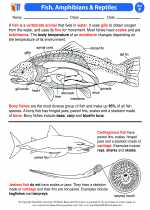 Fish, Amphibians & Reptiles
Fish, Amphibians & Reptiles  Worksheet/Answer key
Worksheet/Answer key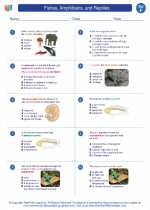 Fishes, Amphibians, and Reptiles
Fishes, Amphibians, and Reptiles  Worksheet/Answer key
Worksheet/Answer key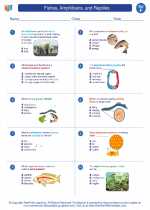 Fishes, Amphibians, and Reptiles
Fishes, Amphibians, and Reptiles  Worksheet/Answer key
Worksheet/Answer key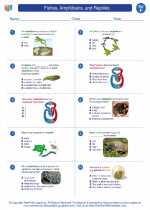 Fishes, Amphibians, and Reptiles
Fishes, Amphibians, and Reptiles  Worksheet/Answer key
Worksheet/Answer key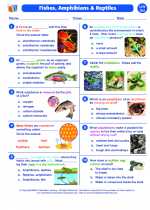 Fishes, Amphibians, and Reptiles
Fishes, Amphibians, and Reptiles  Vocabulary/Answer key
Vocabulary/Answer key Fishes, Amphibians, and Reptiles
Fishes, Amphibians, and Reptiles  Vocabulary/Answer key
Vocabulary/Answer key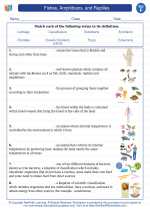 Fishes, Amphibians, and Reptiles
Fishes, Amphibians, and Reptiles  Vocabulary/Answer key
Vocabulary/Answer key Fishes, Amphibians, and Reptiles
Fishes, Amphibians, and Reptiles  Vocabulary/Answer key
Vocabulary/Answer key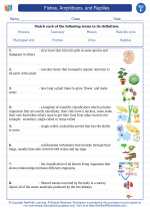 Fishes, Amphibians, and Reptiles
Fishes, Amphibians, and Reptiles  Vocabulary/Answer key
Vocabulary/Answer key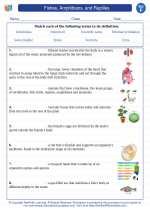 Fishes, Amphibians, and Reptiles
Fishes, Amphibians, and Reptiles 

 Activity Lesson
Activity Lesson
 Worksheet/Answer key
Worksheet/Answer key
 Worksheet/Answer key
Worksheet/Answer key
 Worksheet/Answer key
Worksheet/Answer key
 Worksheet/Answer key
Worksheet/Answer key
 Vocabulary/Answer key
Vocabulary/Answer key
 Vocabulary/Answer key
Vocabulary/Answer key
 Vocabulary/Answer key
Vocabulary/Answer key
 Vocabulary/Answer key
Vocabulary/Answer key
 Vocabulary/Answer key
Vocabulary/Answer key

The resources above cover the following skills:
LIFE SCIENCE
From Molecules to Organisms: Structures and Processes